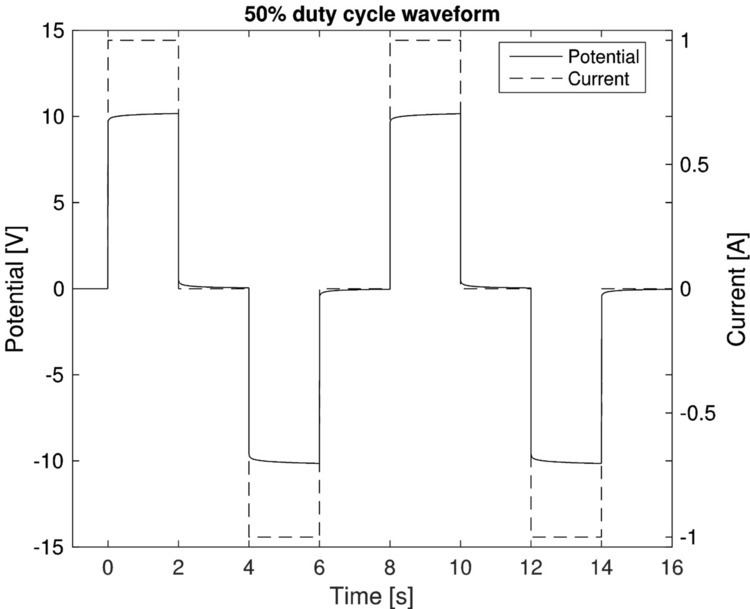 | ||
Induced polarization (IP) is a geophysical imaging technique used to identify the electrical chargeability of subsurface materials, such as ore. The method is similar to electrical resistivity tomography, in that an electric current is transmitted into the subsurface through two electrodes, and voltage is monitored through two other electrodes.
Contents
Time domain measurements
Time domain IP methods measure considers the resulting voltage following a change in the injected current. The time domain IP potential response can be evaluated by considering the mean value on the resulting voltage, known as integral chargeability or by evaluating the spectral information and considering the shape of the potential response, for example describing it with a Cole-Cole model.
Frequency domain measurements
Frequency domain IP methods (see Spectral Induced Polarisation) use alternating currents (AC) to induce electric charges in the subsurface, and the apparent resistivity is measured at different AC frequencies.
